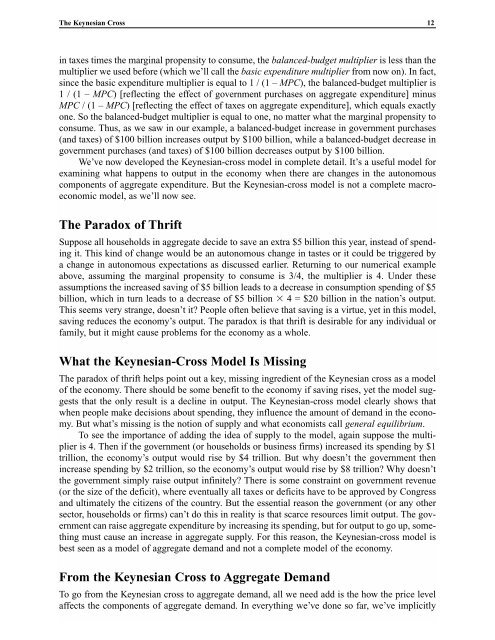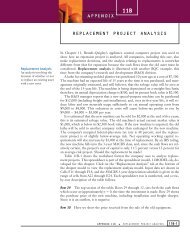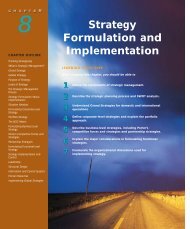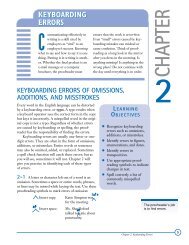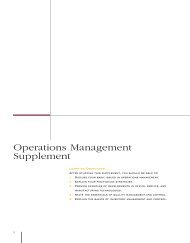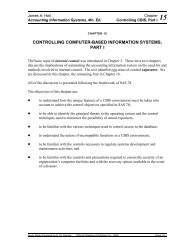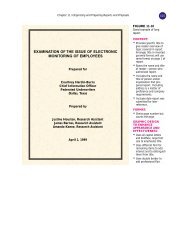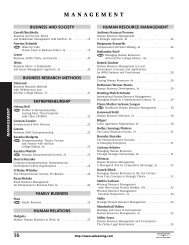The Keynesian Cross
The Keynesian Cross
The Keynesian Cross
You also want an ePaper? Increase the reach of your titles
YUMPU automatically turns print PDFs into web optimized ePapers that Google loves.
<strong>The</strong> <strong>Keynesian</strong> <strong>Cross</strong> 12<br />
in taxes times the marginal propensity to consume, the balanced-budget multiplier is less than the<br />
multiplier we used before (which we’ll call the basic expenditure multiplier from now on). In fact,<br />
since the basic expenditure multiplier is equal to 1 / (1 – MPC), the balanced-budget multiplier is<br />
1 / (1 – MPC) [reflecting the effect of government purchases on aggregate expenditure] minus<br />
MPC / (1 – MPC) [reflecting the effect of taxes on aggregate expenditure], which equals exactly<br />
one. So the balanced-budget multiplier is equal to one, no matter what the marginal propensity to<br />
consume. Thus, as we saw in our example, a balanced-budget increase in government purchases<br />
(and taxes) of $100 billion increases output by $100 billion, while a balanced-budget decrease in<br />
government purchases (and taxes) of $100 billion decreases output by $100 billion.<br />
We’ve now developed the <strong>Keynesian</strong>-cross model in complete detail. It’s a useful model for<br />
examining what happens to output in the economy when there are changes in the autonomous<br />
components of aggregate expenditure. But the <strong>Keynesian</strong>-cross model is not a complete macroeconomic<br />
model, as we’ll now see.<br />
<strong>The</strong> Paradox of Thrift<br />
Suppose all households in aggregate decide to save an extra $5 billion this year, instead of spending<br />
it. This kind of change would be an autonomous change in tastes or it could be triggered by<br />
a change in autonomous expectations as discussed earlier. Returning to our numerical example<br />
above, assuming the marginal propensity to consume is 3/4, the multiplier is 4. Under these<br />
assumptions the increased saving of $5 billion leads to a decrease in consumption spending of $5<br />
billion, which in turn leads to a decrease of $5 billion 4 = $20 billion in the nation’s output.<br />
This seems very strange, doesn’t it? People often believe that saving is a virtue, yet in this model,<br />
saving reduces the economy’s output. <strong>The</strong> paradox is that thrift is desirable for any individual or<br />
family, but it might cause problems for the economy as a whole.<br />
What the <strong>Keynesian</strong>-<strong>Cross</strong> Model Is Missing<br />
<strong>The</strong> paradox of thrift helps point out a key, missing ingredient of the <strong>Keynesian</strong> cross as a model<br />
of the economy. <strong>The</strong>re should be some benefit to the economy if saving rises, yet the model suggests<br />
that the only result is a decline in output. <strong>The</strong> <strong>Keynesian</strong>-cross model clearly shows that<br />
when people make decisions about spending, they influence the amount of demand in the economy.<br />
But what’s missing is the notion of supply and what economists call general equilibrium.<br />
To see the importance of adding the idea of supply to the model, again suppose the multiplier<br />
is 4. <strong>The</strong>n if the government (or households or business firms) increased its spending by $1<br />
trillion, the economy’s output would rise by $4 trillion. But why doesn’t the government then<br />
increase spending by $2 trillion, so the economy’s output would rise by $8 trillion? Why doesn’t<br />
the government simply raise output infinitely? <strong>The</strong>re is some constraint on government revenue<br />
(or the size of the deficit), where eventually all taxes or deficits have to be approved by Congress<br />
and ultimately the citizens of the country. But the essential reason the government (or any other<br />
sector, households or firms) can’t do this in reality is that scarce resources limit output. <strong>The</strong> government<br />
can raise aggregate expenditure by increasing its spending, but for output to go up, something<br />
must cause an increase in aggregate supply. For this reason, the <strong>Keynesian</strong>-cross model is<br />
best seen as a model of aggregate demand and not a complete model of the economy.<br />
From the <strong>Keynesian</strong> <strong>Cross</strong> to Aggregate Demand<br />
To go from the <strong>Keynesian</strong> cross to aggregate demand, all we need add is the how the price level<br />
affects the components of aggregate demand. In everything we’ve done so far, we’ve implicitly


